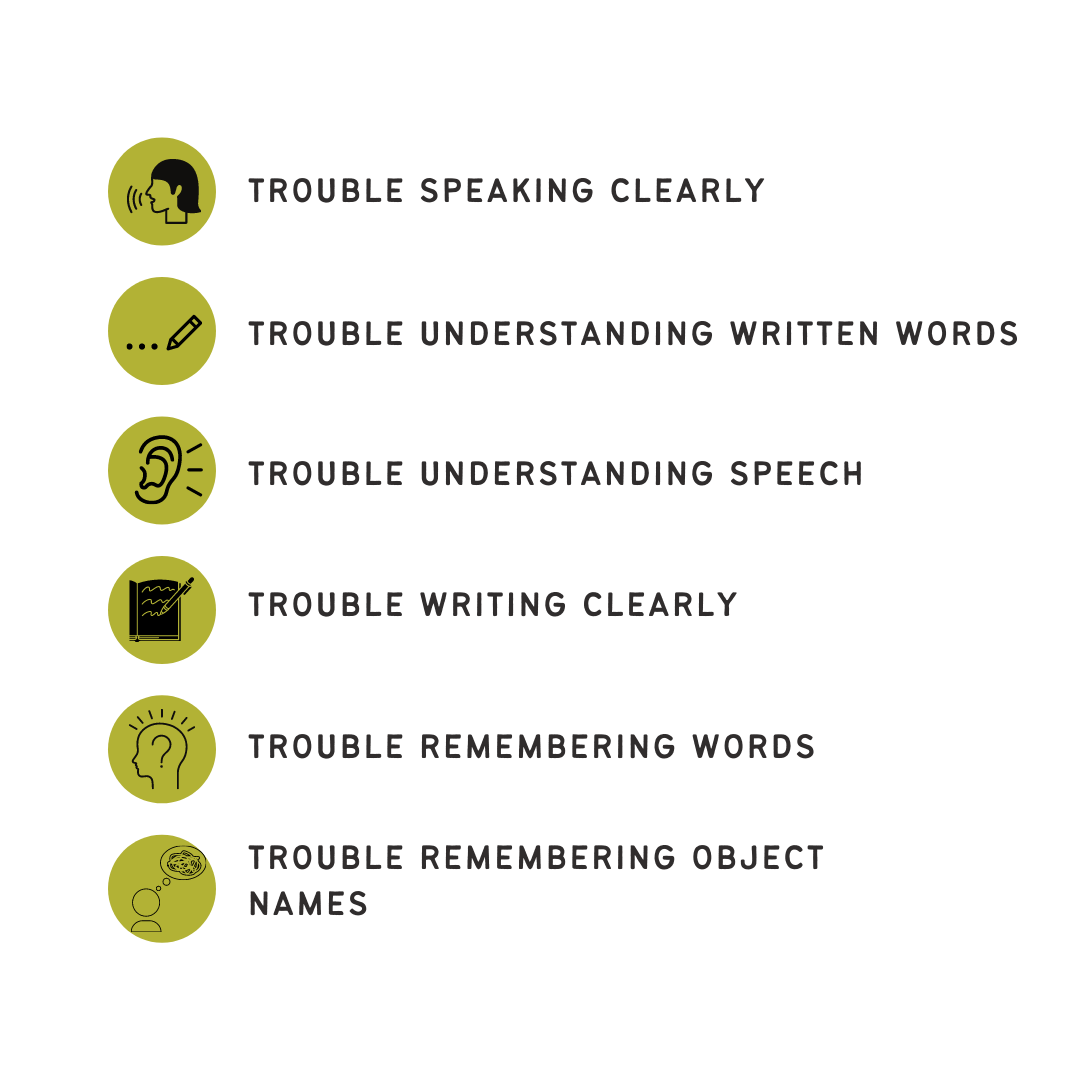We all have probably heard by now that Bruce Willis is retiring due to his diagnosis of Aphasia. Prior to this, not many knew of this condition and what exactly happens in the brain when diagnosed with it.
Aphasia is a condition that affects the ability to communicate due to damage to the brain. It affects one’s ability to speak or understand speech. It also impacts how they understand written words and their ability to read and write. Depending on which part of the brain is injured, Aphasia can take different forms.
In most cases, Aphasia is caused by Strokes, Head Injuries, and Brain Tumors. It is typically diagnosed fairly quickly following a brain injury, as the ability to speak or communicate will decline. Aphasia is unfortunately quite common. Approximately 1/3 of all stroke survivors suffer from it. In the U.S., around 2 million people have aphasia and around 225,000 Americans are diagnosed every year.
Symptoms of Aphasia:

3 Types of Aphasia
The Subtypes of Aphasia:
- Receptive Aphasia/Wernicke’s (Fluent): When the individual has trouble understanding what is being said. They are able to produce fluent speech but may not understand what they are saying. Additionally, they may be unable to write or read.
- Expressive Aphasia/Broca’s (Non-Fluent): When the individual is having difficulty expressing what they want to say. They are usually capable of speaking in short, meaningful sentences but may not use “fill in words” like “and” and “the”.
- Global Aphasia: This happens when the damage to the brain is so widespread that it involves both Broca’s and Wernicke’s language areas.
Did you know that Neurofeedback can help with the symptoms of Aphasia?
Aphasia is a condition caused by damage in a specific area of the brain that controls language expression and comprehension. Aphasia often leaves a person unable to communicate effectively with others.
Neurofeedback has been clinically proven to be very successful in decreasing strokes, head injuries, and TBIs. A study done on Neurofeedback as a form of cognitive rehabilitation therapy post-stroke found that participants noted improvement in memory, mood, concentration, energy, reading, and speech abilities.
Neurofeedback optimizes brain processing speed so the brain can process information in real-time. It brings those very specific areas of the brain back online and improves their functioning again so that skills and abilities can be performed by the individual. Neurofeedback can help find the dysregulated brain frequencies for the following symptoms and improve cognitive deficits.
At Healthy Within, we do not diagnose or medicate our patients but instead, curate individualized treatments for our patients.
Contact us for more information about how we can help you get your mind back to functioning at its calm, confident self.


